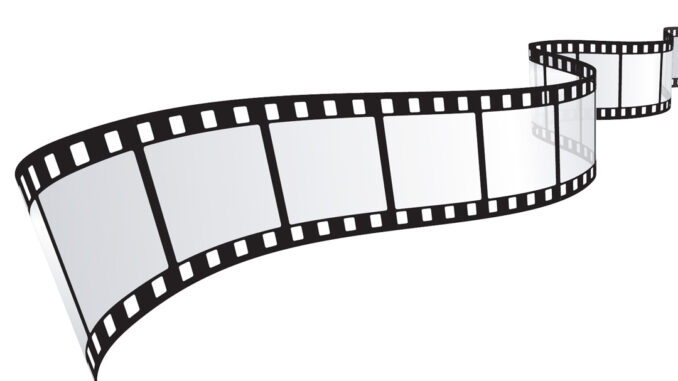
As I sat down to write this latest column, Netflix had just released Happy Gilmore 2. The sequel to the 1996 movie starring Adam Sandler was an ace in terms of viewership. According to Variety, 46.7 million people streamed the movie in its first three days of release, making it the biggest U.S. opening weekend in Netflix history.
Watching Happy Gilmore 2 reminded me of the long relationship between Hollywood and the sport which I love. How many great (and not-so-great) golf films are part of cinema history.
The first known feature-length golf movie was made in 1927 – the silent romantic comedy Spring Fever starring William Haines, the biggest box office star of the day. Ever since, golf has frequently starred on the big screen. No golf movie ever won an Oscar, but they’ve brought broader interest to the game, shared untold stories and, from some of the best, brought a lot of laughs and memorable lines which are now part of pop culture and our lexicon such as “just tap it in,” “be the ball” and a “Tin Cup moment.”
For your consideration, here are my Top Five golf movies.
The Caddy (1953)
Filmed on location at the swanky Riviera Country Club in the Pacific Palisades neighbourhood of Los Angeles, this musical comedy features the loveable comedic duo of Dean Martin and Jerry Lewis. A fun piece of trivia from this movie: Martin’s song – “That’s Amore” – which was nominated for an Oscar, first appeared here and became one of the “King of Cool’s” signature songs. Some of the top PGA Tour professionals of the era, such as Sam Snead, Ben Hogan and Byron Nelson, all made cameos in The Caddy.
Caddyshack (1980)
For a movie filled with laughs which uses a golf course as the setting, nothing beats this cult classic. The slapstick comedy set at the fictional Bushwood Country Club, satirized life inside the gates of one of these tony playgrounds for the uber rich. Caddyshack featured some of the funniest men of their generation: Chevy Chase, Rodney Dangerfield and Bill Murray. Chase plays the eccentric Buddhist-following character Ty Webb, who utters the oft-quoted line, “Be the ball.” The star, however, is Murray, playing assistant greenskeeper Carl Spackler, who battles throughout the movie with a pesky critter that chews up the fairways and greens at Bushwood.
Tin Cup (1996)
When it comes to one of the most authentic golf films ever made (and also one of the most successful), the vote goes to Tin Cup (1996). The film opened number one at the box office and earned $76 million, exceeding its budget by about $30 million.
Spoiler alert: no happy Hollywood ending here. Instead, the climax sees the movie’s main character – washed-up club professional Roy McAvoy (played by Kevin Costner) – blow a chance to win the U.S. Open. Up by two shots, McAvoy makes a bad decision and ends up recording a 12 on the final hole… to lose. He was too proud to “lay up,” (i.e., he possessed an aggressive mindset that did not allow him to ever consider a safe, more strategic shot). Instead, he lived by the motto – “Go for broke!” This fictional character’s collapse has now become part of golf lingo. Any time a player, whether a professional in a high-stakes tournament or an amateur in a game with buddies on a Saturday afternoon, makes a dumb decision and loses a tournament or match, people call it a “Tin Cup moment.”
Here are a few other fun and fascinating facts about Tin Cup that make it the most authentic golf movie ever made:
- Gary McCord, American golf professional and TV commentator, was hired as a golf consultant to work with Kevin Costner, who did not want a stunt double and insisted on hitting all of his shots. McCord demanded and got paid $250,000. To earn that lofty fee he, of course, instructed Costner on the use of the different clubs and on his swing. He also taught him about how golfers win – and lose. To illustrate the latter, he shared some of his most famous meltdowns on the golf course (like the time he made a 16 at Colonial Country Club, which included hitting five balls into the water).
- A TV tower was constructed to replicate the actual structures seen at all televised PGA Tour events.
- Actual sponsors were signed for all of the fictional golfers in the movie.
- The driving range where McAvoy teaches before playing on the pro circuit was built from scratch in a remote spot an hour south of Tucson, Arizona.
- USGA officials were even hired to review the courses used in the film to ensure that they were in real U.S. Open conditioning shape.
Happy Gilmore (1996)
I’ll admit that Adam Sandler’s humour is not for everyone but, if you enjoy slapstick comedy, and you love golf, then it’s hard not to fall for this film. The concept: take a guy with failed hockey dreams who can never hold down a job for too long, who takes up golf when an ex-pro sees how far he can hit a ball and who learns that he can win big money to help prevent the bank from taking his grandmother’s house away. The next thing you know, Happy is playing on the professional tour and trying to beat the current star and reigning money-leader Shooter McGavin. The laughs are non-stop, at least in my humble opinion. Happy proceeds to set the tour on its head with his antics and his temper. From Happy’s fistfight on the golf course with the late host of The Price is Right – Bob Barker (who makes a cameo), to his epic-winning putt in the tour championship, this remains a classic nearly 30 years since its release.
The Greatest Game Ever Played (2005)
This 2005 Disney biopic is one of the greatest inspirational golf movies. The Greatest Game Ever Played tells the story of the 1913 U.S. Open at the Country Club in Brookline, Massachusetts and how Francis Ouimet – a 21-year-old, self-taught, working-class amateur who had grown up across the street from the course, defeats one of the greatest golfers of the day – Englishman Harry Vardon.
When Ouimet won, he became the first amateur – and only the second American at the time – to win the U.S. Open. The historical significance of his win at Brookline reverberated far beyond Massachusetts. News of this upset – a feel-good David and Goliath story – spawned an explosive growth in the game throughout North America. Golf became popular with both the middle and the working classes. According to the Ouimet Scholarship Fund (founded in 1949 to assist students involved in the golfing community pay for college), the number of Americans playing golf soared from 350,000 in 1913 to 2.1 million a decade later, and the number of courses tripled.
Word of Ouimet’s accomplishments reached downtown Boston; people left work early and crowded onto streetcars to head to Brookline and catch a glimpse of this local boy wonder. The next day, the what trio? => trio returned to the Country Club for an 18-hole playoff. The crowds were estimated to be at least 10,000 strong – the largest gallery ever to watch a golf match to that point. The movie beautifully captures this historic sports moment.
Honourable Mention
The Founders (2016)
Back in the late 1940s – and against all odds – a group of 13 trail-blazing women banded together to form the Ladies Professional Golf Association (LPGA). In 2025, the LPGA celebrates its 75th anniversary and, thanks to these inspirational women, is now the longest-running women’s sports league. The Founders is an inspirational documentary that shares how these 13 women worked tirelessly to stage tournaments (often funded with their own money) in towns across North America. Using modern-day interviews with a few of the surviving founders, combined with historic clips from some of those early tournaments, this is a documentary well worth your watch, whether or not you love golf.
Fore! Happy movie watching. Let me know your thoughts and your opinions and any others that I might have missed or should watch. Drop me a line at davidmcpherson1973@gmail.com
